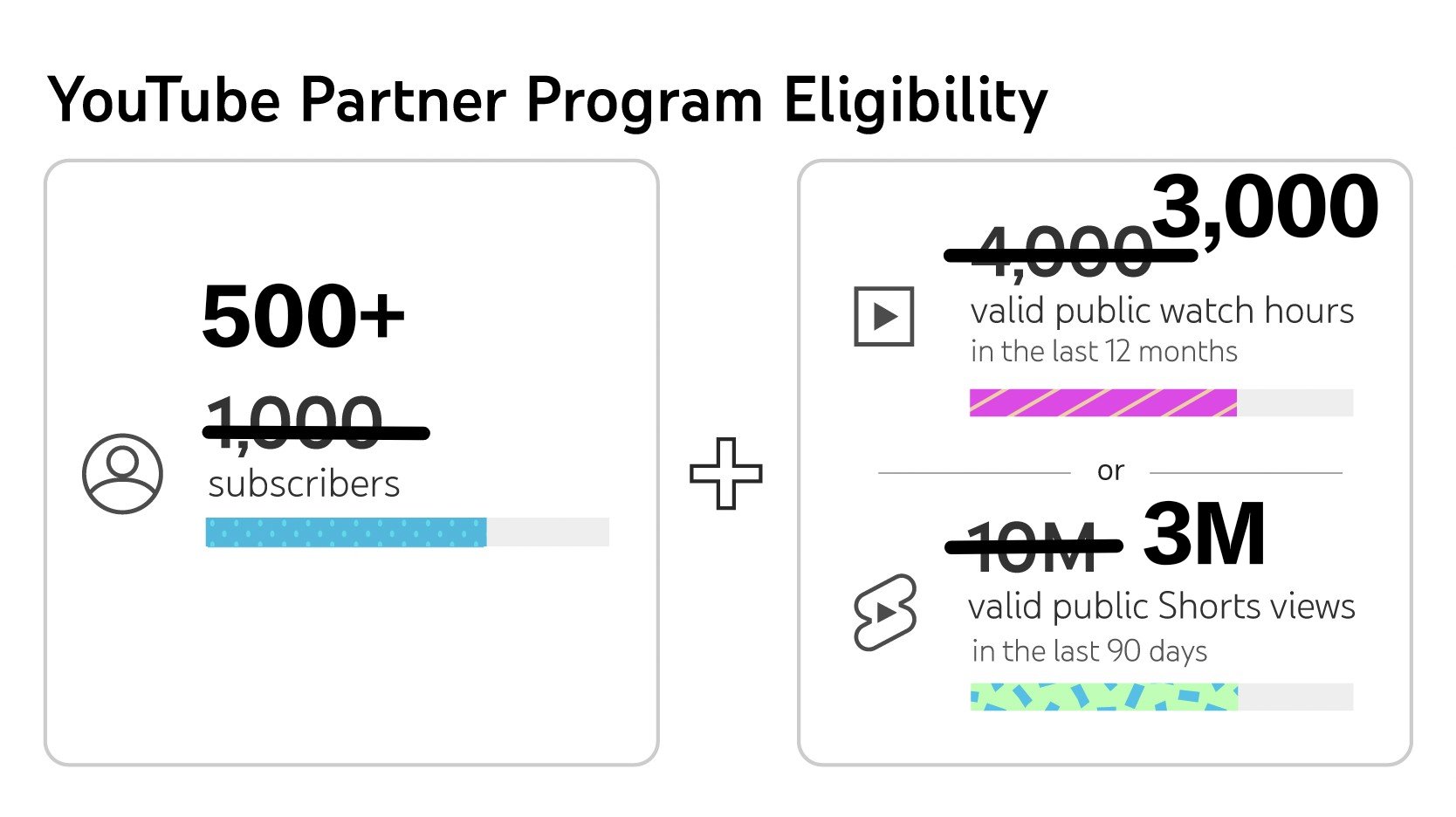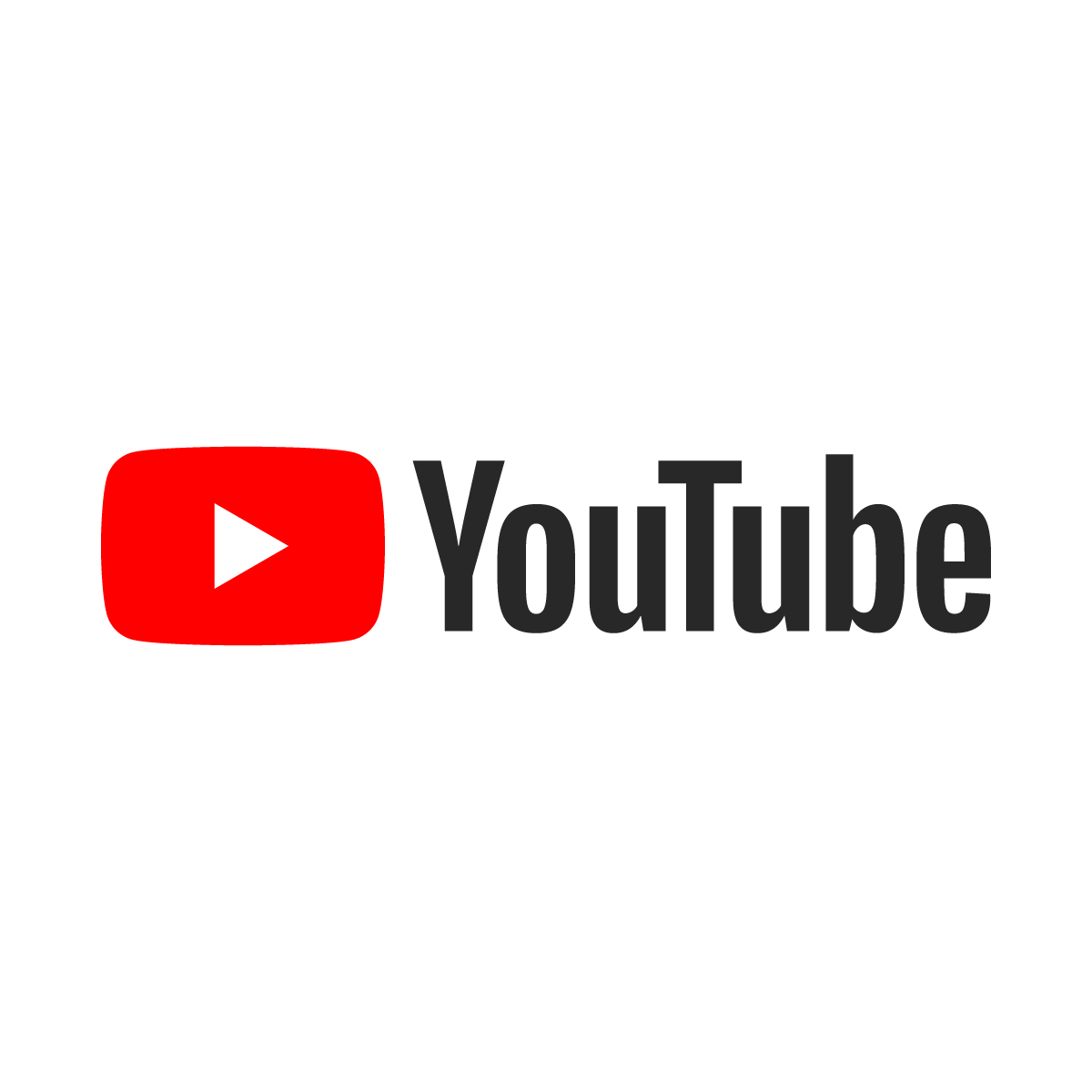New Youtube Monetization Policy 2023.
If you are a YouTube creator who wants to make money from your videos, you need to be aware of the changes that YouTube is making to its monetization policy for 2023.Popular video-sharing and social media platform YouTube has announced that channels with 500 subscribers are now eligible to earn money, reducing the eligibility subscriber count from the previous 1000.
The platform made the change in its eligibility requirements and tweaked its monetization policy to give smaller creators a chance to survive and thrive on the platform, India Today reported. Previously, the minimum number of subscribers required to earn money was 1000.In addition to tweaking the subscriber count eligibility, the platform has also lowered the watch hour criteria from 4000 hours to 3000 hours.If your channel primarily indulges in creating shorts, there is more good news, as the eligibility view count has been significantly lowered to 3 million from the previous 10 million. This change dramatically increases the chance for smaller content creators to earn on the platform.
The new eligibility criteria will be implemented first in the United States, the United Kingdom, Taiwan and South Korea, before making its way to other regions.
These changes will affect how you can earn revenue from different types of content and features on YouTube, and what terms and conditions you need to agree to. In this blog post, we will explain what these changes are and how they will impact you as a YouTube creator.
The new YouTube monetization policy introduces a modular approach, where creators can choose from different contract modules to unlock different earning opportunities. The modules are:
- Base Terms: These are the foundational terms that all creators who want to monetize on YouTube must accept. They cover topics like payment, content policies, and rights clearance adjustments.
- Watch Page Monetization Module: This module allows creators to earn ad and YouTube Premium revenue from their long-form or live streaming videos viewed on the Watch Page, which is the page dedicated to the description and playback of videos on YouTube, YouTube Music, and YouTube Kids. This module also applies to videos embedded on other sites using the YouTube Video Player. For example, if you make a video about cooking a delicious recipe or streaming a video game, you can earn revenue from ads shown on your video or from YouTube Premium subscribers who watch your video.
- Shorts Monetization Module: This module enables creators to share revenue from ads viewed between videos in the Shorts Feed, which is the vertical video format that allows users to watch short videos on YouTube. This module also allows creators to earn YouTube Premium revenue from their eligible Shorts views. For example, if you make a short video about a funny prank or a cute animal, you can earn revenue from ads shown between other Shorts or from YouTube Premium subscribers who watch your Short.
- Commerce Product Addendum: This addendum unlocks a series of fan funding features that help creators earn while connecting with their fans, such as channel memberships, Super Chat, Super Stickers, and Super Thanks. For example, if you have loyal fans who want to support your channel or interact with you during a live stream, you can earn revenue from them joining your channel as members or sending you paid messages or stickers.
Creators who are already in the YouTube Partner Program (YPP) must accept the new Base Terms and the Watch Page Monetization Module by July 10, 2023 to continue monetizing on YouTube. They can also accept the Shorts Monetization Module to start earning from Shorts Feed ads as early as February 1, 2023, or on the date they accept. The Commerce Product Addendum remains unchanged, so if they have already accepted it, they don't need to do it again.
The new YouTube monetization policy aims to give creators more flexibility and choice in how they monetize their content on YouTube. It also reflects the evolving nature of YouTube as a platform that offers different types of content and experiences for users and creators.





.jpg)
No comments:
Post a Comment